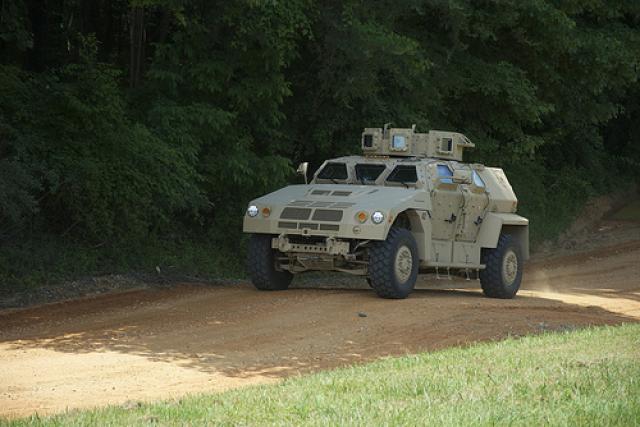WASHINGTON, May 17, 2010 — The new NATO strategic concept seeks to help the alliance sort through the challenges of the future and discuss where the alliance is going, NATO’s supreme allied commander for Europe said here today.
Navy Adm. James G. Stavridis briefed the Defense Writers Group on the new strategic concept document, released today, that NATO leaders are expected to approve during the alliance’s Lisbon, Portugal, summit in November.
The concept is the first update since 1999, the admiral noted. “Obviously, the world has changed,” he said. Former U.S. Secretary of State Madeleine Albright chaired the 12-member panel that developed the concept.
The concept talks a lot about a comprehensive approach that Stavridis described as international, interagency and private and public entities coming together to address security problems. “I believe that we will not deliver security from the barrel of a gun as we move forward in the 21st century,” he said.
The alliance has to combine the international and interagency efforts, Stavridis noted. For example, he said, the U.S. Agency for International Development has to work with its equivalent organizations from other NATO countries.
“I believe security has to be multinational, and I think it is more than just the military aspect as well,” Stavridis said. “I think we need to encourage partnership among different government agencies, so our development efforts are linked together internationally, our diplomatic efforts are linked and our telecommunications efforts are linked.”
The admiral said he believes the alliance is beginning to understand this need.
“I think the next big thing is public/private,” he said, finding ways NATO can help private-sector organizations engaged particularly in humanitarian and disaster-relief efforts. Some 2,000 private-sector organizations are working in Afghanistan, he added.
The concept also recommends that any decisions about nuclear weapons in Europe must be made by the alliance as a whole, and it also recommends talks with Russia about strategic arms. Stavridis said there is a role for nuclear weapons in the alliance, “at least strategically and, at the moment, tactical nuclear weapons.”
Building a cyber-defense capability is a rising need, the admiral said. NATO finds itself in the same situation as the United States: having to define what constitutes an attack, how to pinpoint its origin and how to respond in a proportional manner.
The concept also calls on changing the way NATO does business. Stavridis already has started this process, and this dovetails well with Defense Secretary Robert M. Gates’ desire to cut overhead in the U.S. Defense Department.
“I am looking to make significant reductions in staff size and [the number of] flag and general officers,” the admiral said. “This includes reducing the number of actual NATO headquarters. So that is a very strong effort.”
The admiral said he thinks this NATO effort can parallel the U.S. effort, and he has instructed his staff to look at where these reductions might come from. “I’m confident that we will find some cuts that will be acceptable, because they are rational,” he said.
Finally, communication is key to any change in strategy, Stavridis said. “Generally speaking, the future of security is not kinetic,” he said. “We’re very good at launching Tomahawk missiles; we’re not very good at launching ideas.”
Source:
U.S. Department of Defense
Office of the Assistant Secretary of Defense (Public Affairs)

 von
von 